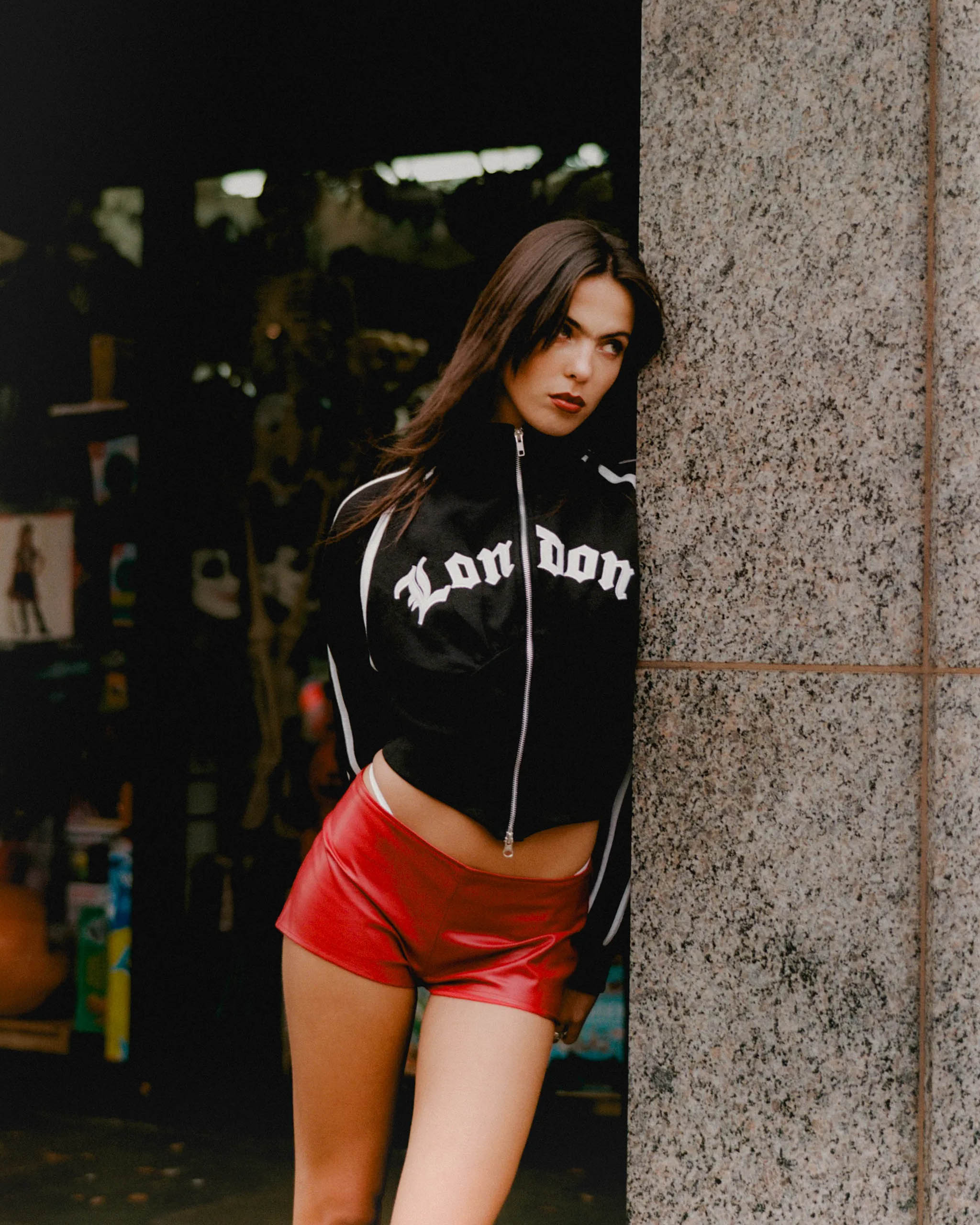Photo: Ezekiel
In the early months of the pandemic, Timothy Gibbons was toying around with a shamrock-green Irish rugby shirt he’d found in a thrift store when inspiration struck. He pulled out his cutting scissors and sliced it in half horizontally; next, he put his Central Saint Martins degree to work, building a meticulously constructed quilted corset in a matching shade. He pieced the two together, and behold! Gibbons had created his very own fashion Frankenstein’s monster: a playful synthesis of sportswear and corsetry. “I like to keep my hands busy to stop me from going mad, and it just sort of happened,” he laughs.
It was a little later, however, that Gibbons stumbled upon the formula that would become a hit. Last summer, between stints assisting costume designers for film and TV in London, he spent an extended period of time in New York working in the studios of both Carly Mark of Puppets and Puppets and Kim Nguyen of Nguyen Inc. While observing the latter’s alchemical ability to upcycle trash into fashion treasure, he was inspired to revisit this hybrid technique. “I was absolutely broke, living on friends’ sofas, and I saw the pieces Kim was making with T-shirts from Canal Street,” he remembers. “I bought this thrifted sun-bleached hoodie and started fusing them with corsets, and a bunch of friends wanted to buy them instantly. They just kind of took off.”
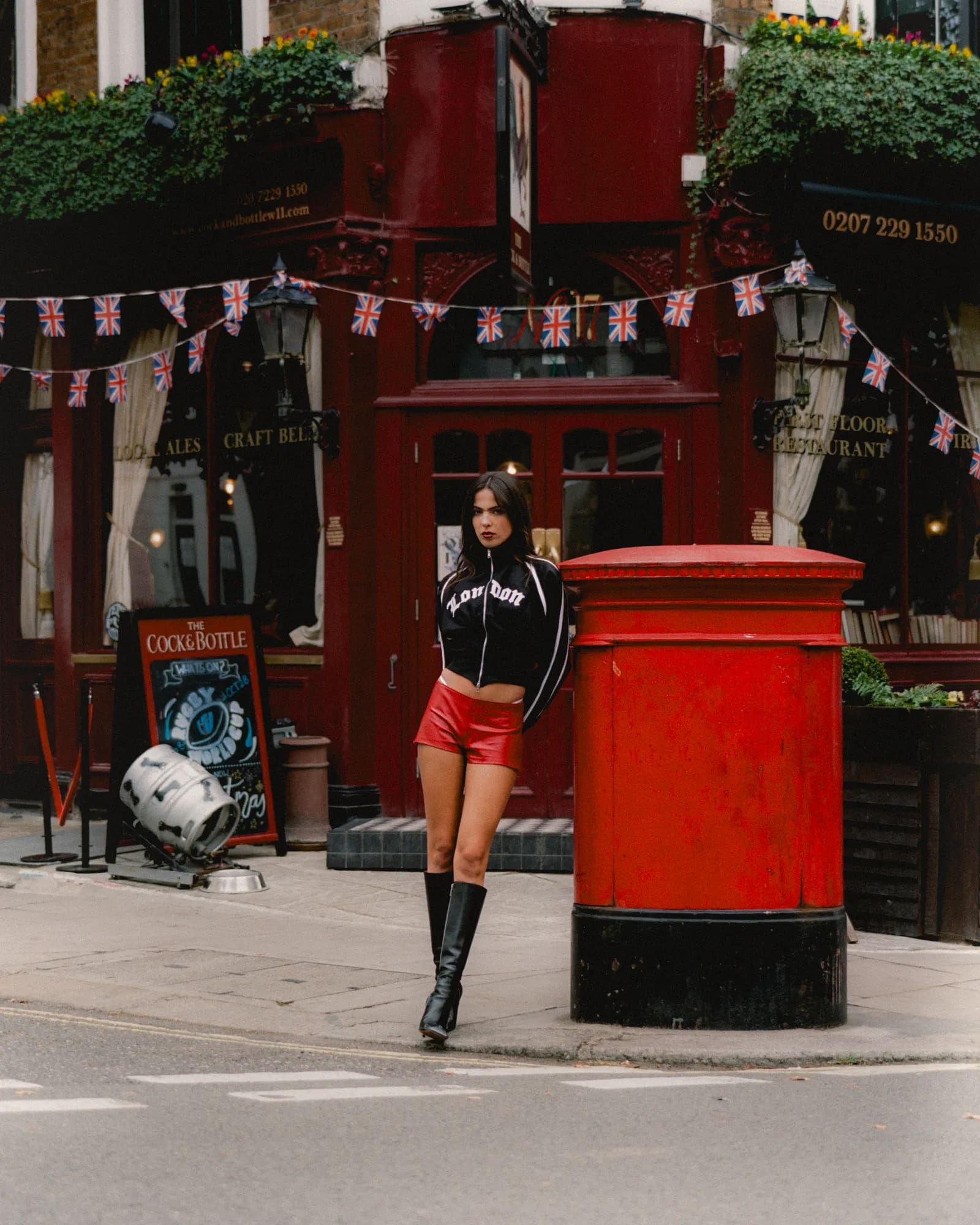
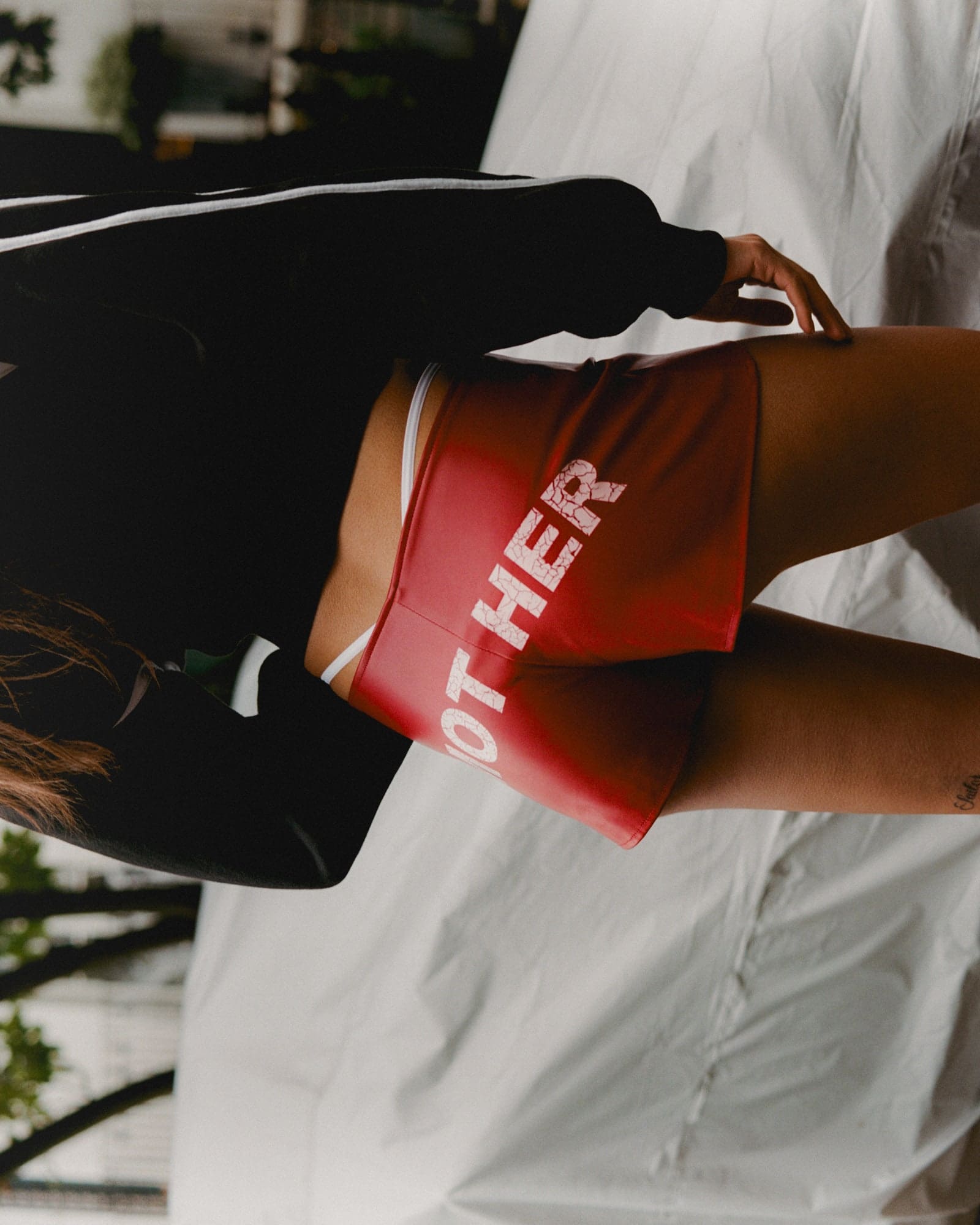
A few Instagram posts later, and word had spread: his one-of-a-kind, highly labor-intensive pieces were stocked by Café Forgot, and a throng of downtown It-girls quickly slid into his DMs asking to acquire their own. From there, the momentum continued. He recently created a custom “Utopia” corset hoodie for Travis Scott, while musicians from Charli XCX to Kim Petras to Courtney Love bought pieces last year after discovering him online. “When a boxer steps out of the ring and they get given that satin robe—I hope that’s what these are like for the pop girlies,” he says. “It’s a dream come true to have people I admire so much wearing them, and I don’t take it for granted. I’m very grateful to literally everyone who’s bought one, and has allowed me to spend this time supported by that financially to keep making them.”
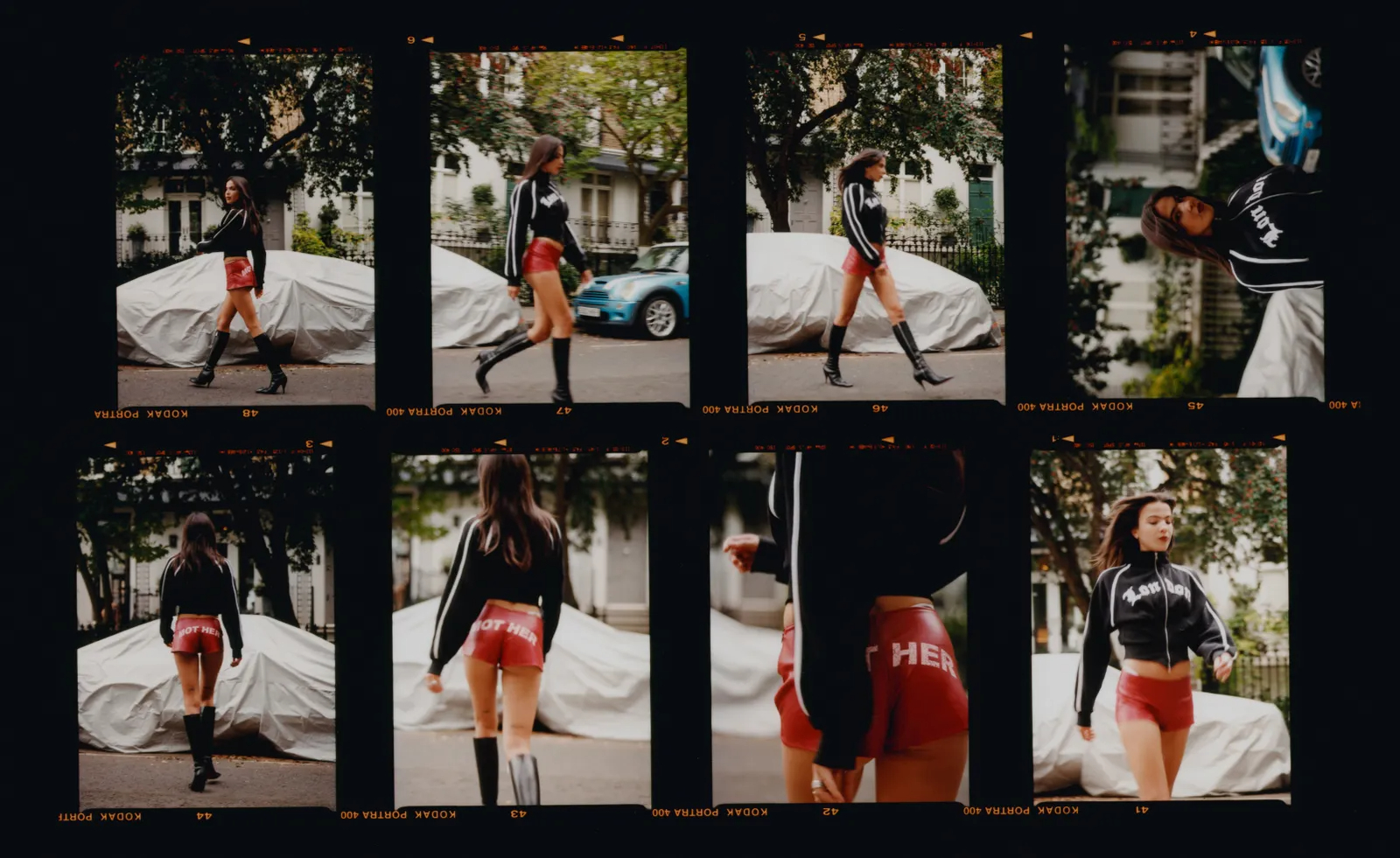
As for why Gibbons believes the corset hoodie formula has attracted such fervent interest, he has a few theories. “I think it could be a post-pandemic thing, where people are looking for something that is semi-sophisticated and elegant, but also comfortable,” he says. “Although I wasn’t thinking about that consciously when I first started making them, of course—I just thought it would be fun.” He’s also quick to note he isn’t the only one to have come up with the idea: there were corset hoodies in Casey Cadwallader of Mugler’s collaboration with H&M, and designers such as Weslah have also experimented with the shape.
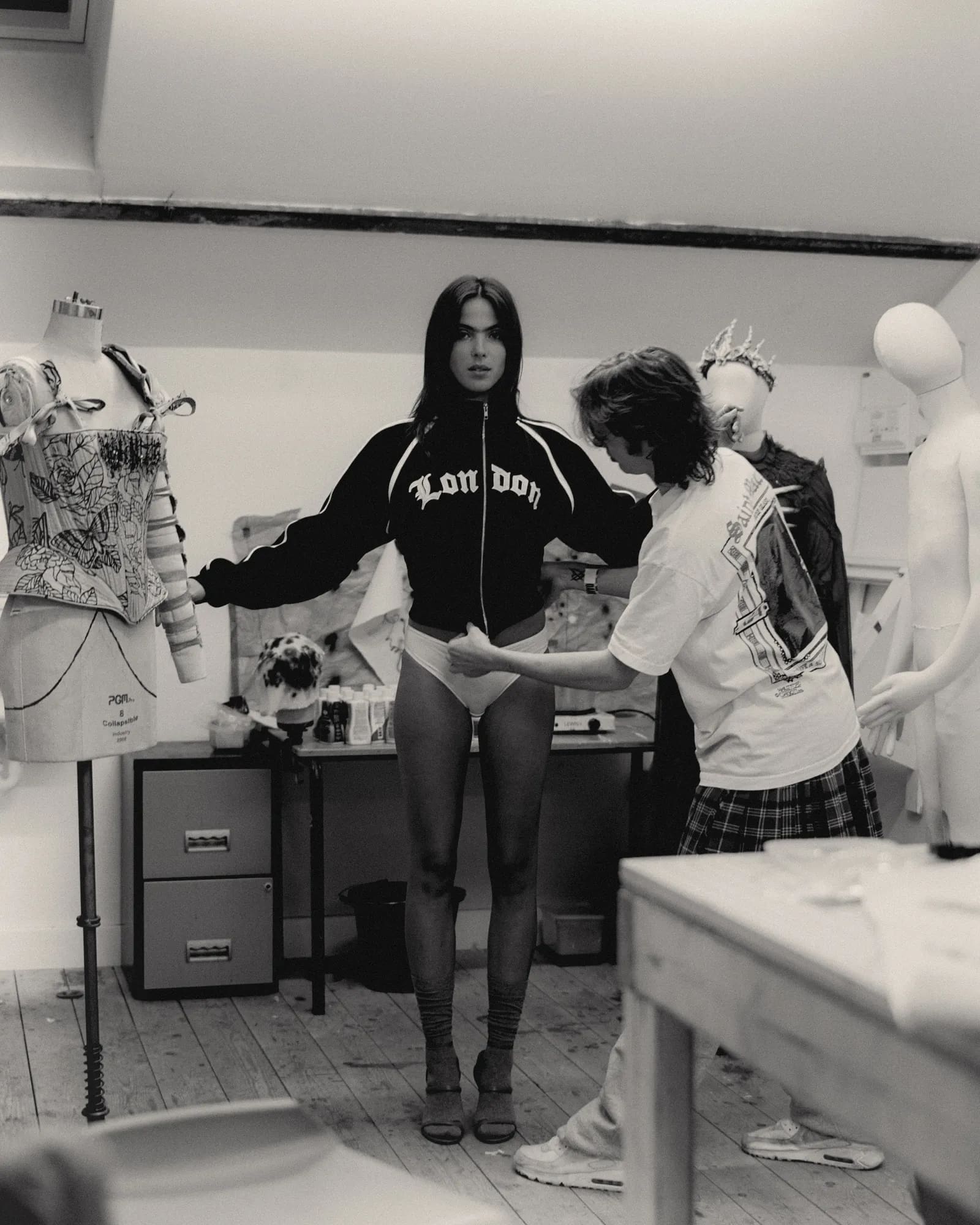
Though what Gibbons does know is that the contradictions inherent to the pieces—their strange (and quietly seductive) ability to both reveal and conceal the torso, and how they simultaneously offer stricture and ease—are the kind of juxtapositions that have always fascinated him, from the earliest pieces he made as a student to his more recent work assisting the legendary costume designer Sandy Powell. Where does that interest in items of clothing that feel paradoxical in some way lie? “I mean, if I really thought about it, it might have something to do with being queer, or this lifelong feeling of being somewhere between masculinity and femininity, and how to marry those traits,” he says, after a pause. “The rugby shirts represent a world of toxic masculinity I felt actively excluded from when I was growing up, and then the corsets are my attempt at reclaiming it, in a way—by bringing in this hyper-feminine element.”


For his latest drop of hoodies, available today—and accompanied by a lookbook with The Face’s America Korban on styling duties—Gibbons decided to pay a more pointed homage to the two cities that have inspired him most: London and New York. (According to his godmother, he told her he wanted to move to both cities when he was a five-year-old growing up in Belfast.) “I haven’t lived in New York half as long as I’ve lived in London, but the effect that each of those cities has had on me is on kind of equal footing,” he says, noting that he deliberately went for a track jacket style and a Gothic font for the London pieces as a nod to its medieval history, while for the New York pieces, he channeled more of a varsity vibe. “I feel like both those cities have welcomed me into their arms.”
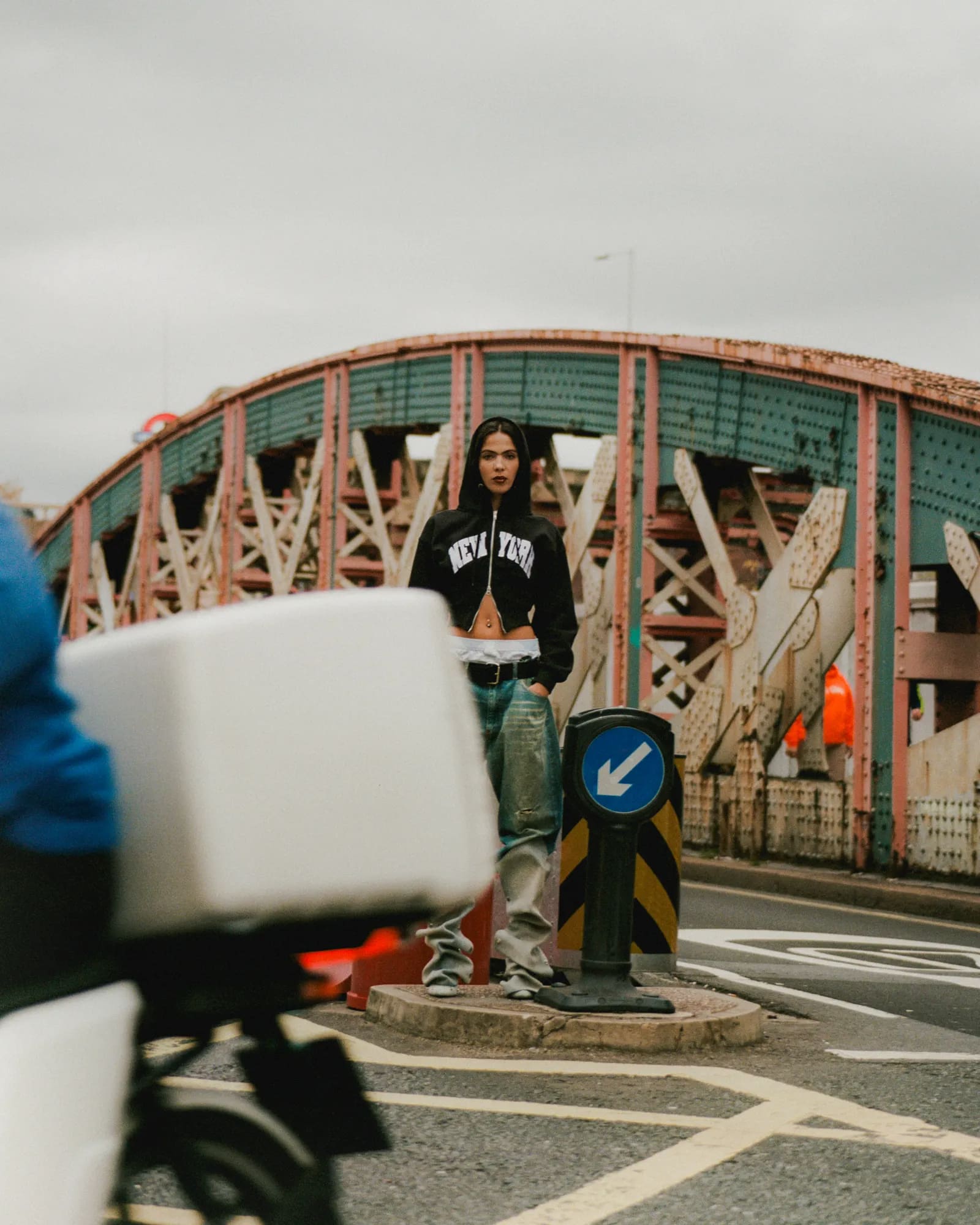
There’s a similar in-betweenness to where Gibbons sees himself within the landscape of London fashion today more broadly. While the traditional channels for designers seeking to establish a brand have become increasingly narrow and poorly funded, many of the city’s most exciting fashion projects—from Nasir Mazhar’s Fantastic Toiles pop-up boutiques to the recently launched Allen and Adcock Costume Studio—are those taking a more DIY approach, often blending retail, costume, and one-off pieces for performers.
This article was originally published on Vogue.com
